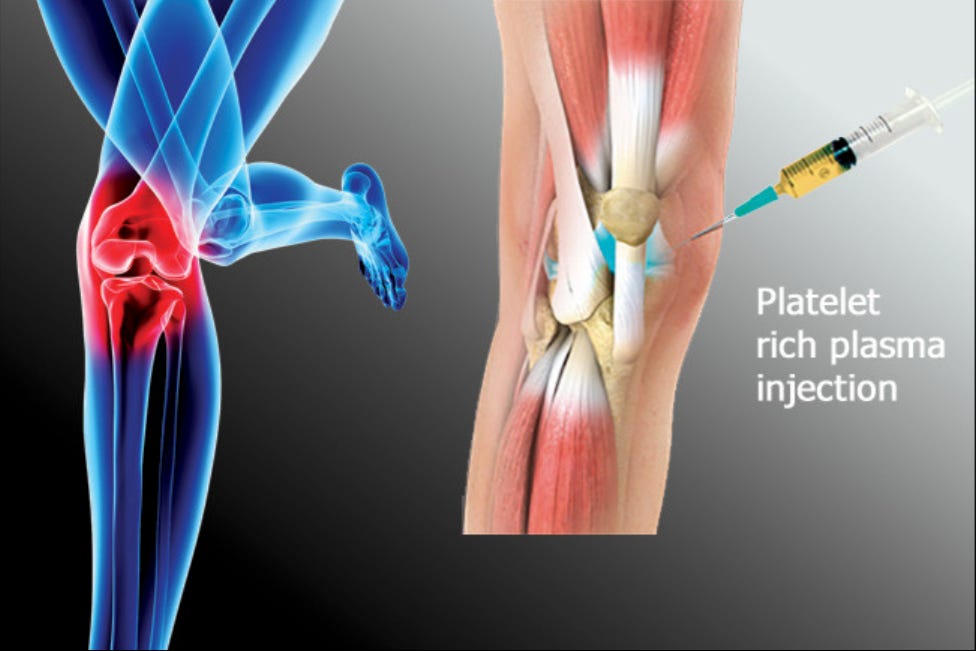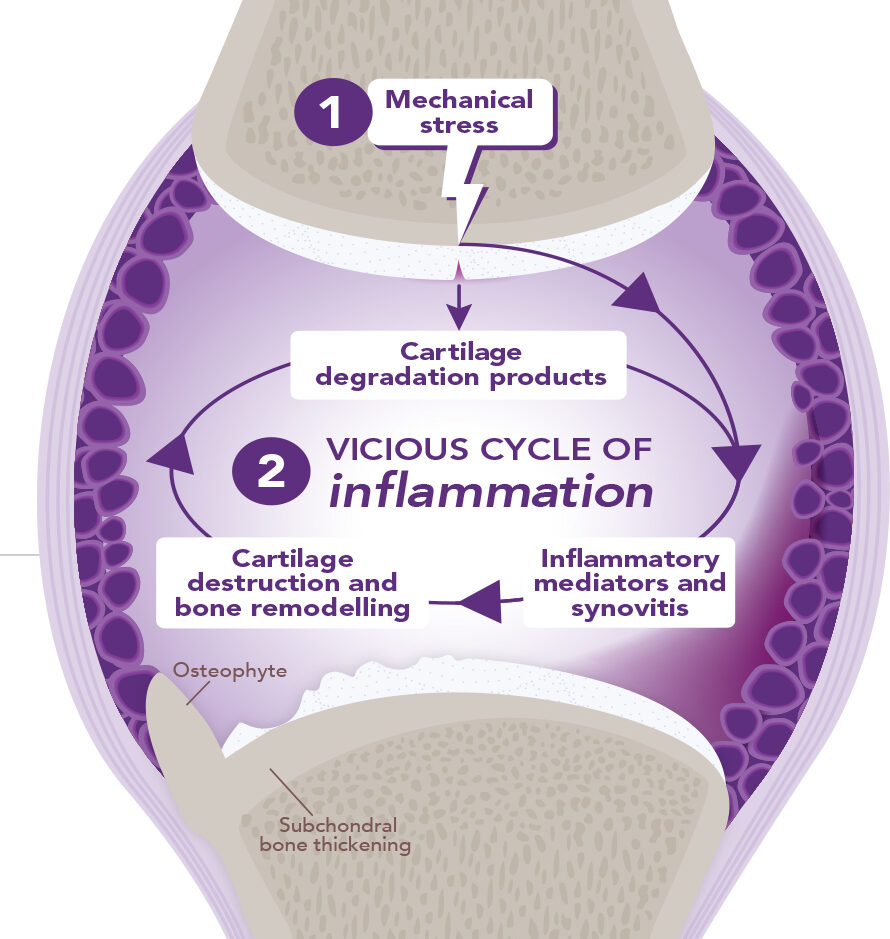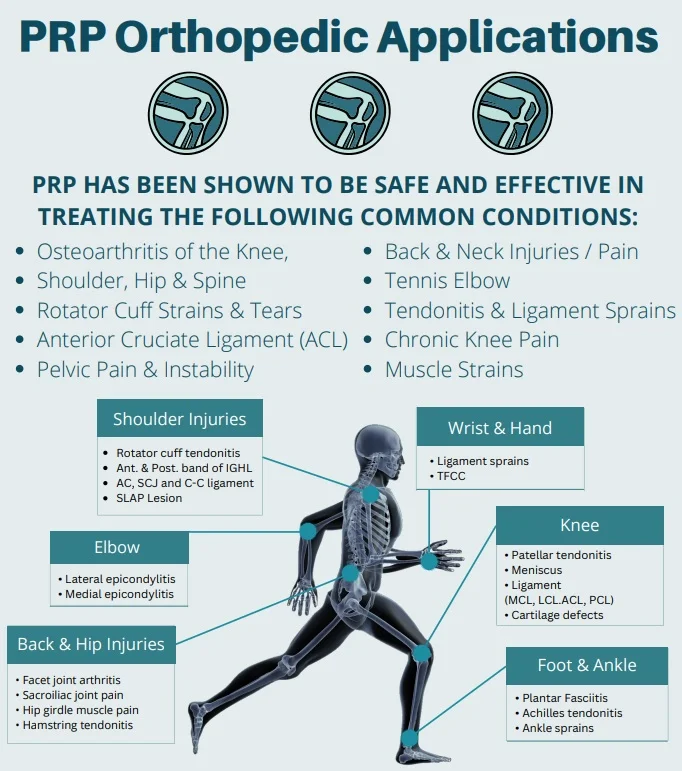
As outlined in this author’s last post, Osteoarthritis (OA) is a condition characterized by incremental joint pain and compromised joint function; an arthritic state, which generally affects individuals over the age of 50 years.1 Left untreated, OA can progress into a severe condition and slowly diminish an individual’s productivity and quality of life.1(1)In the following sections, this author would like to explore a relatively novel approach in managing the symptoms and underlying drivers of OA; a procedure which injects platelet-rich plasma (PRP) into the articulating surfaces of individuals with OA.

As mentioned previously, cartilage damage causes the release of proinflammatory and catabolic substances which drives further cartilage degradation.1(1) The last resource in managing OA (i.e., knee OA) would be joint replacements which are suitable for most older populations but considerably less viable for younger groups. In addition to nutritional support to include use of glucosamine, S-adenosyl methionine (SAME), and vitamin C, PRP could represent another option in management of OA-associated pain and loss of function.

Intra-articular injective treatments (IAITs), according to Altamura et al1(2) has emerged as an alternative to more invasive surgeries like knee joint revisions and knee replacements. IAITs have the potential to provide clinical benefits while delaying more aggressive surgical procedures outlined previously. PRP injections may provide anti-inflammatory and anabolic properties primarily due to cytokines and growth factors released by platelets.1(2) According to Altamura et al,1(2) preclinical research has supported that PRP may promote a fertile environment for joint tissue healing.

Altamura et al1(1) conducted a study which included 47 sport-active patients ≤50 years old with unilateral symptomatic knee cartilage degeneration, or OA. The patients received 3 weekly PRP injections and were prospectively evaluated at baseline followed by a 2, 6, 12, and 24 months follow-up. PRP was harvested from each patient from a single 150 ml unit of peripheral venous blood.1(2) Pain and function of arthritic knees after PRP was evaluated using International Knee Documentation Committee (IKDC) subjective score, EuroQol visual analog scale (EQ-VAS), and Tegner score.1(2)

Results indicated that patients reported a significant improvement in pain and joint function.1(3)Furthermore, the majority of participants returned to their sports but only half could return to the pre-injury level of sport activity.1(3) In the context of the general population, whose desires are more heavily focused on improving activities of daily living (ADLs), PRP is likely to have more meaningful and long-term effects. The possibility of PRP improving athletic populations and return to sport with pre-injury stamina and vigor remains equivocal.
In conclusion, OA is a condition characterized by incremental joint pain and compromised joint function; an arthritic state, which generally affects individuals over the age of 50 years. Left untreated, OA can progress into a severe condition and slowly diminish an individual’s productivity and quality of life. However, PRP injections, in conjunction to a high-quality diet with specific micronutrient support, may allow for a cumulative and layered effect that would otherwise be unattainable if stand-alone interventions were used.
References
1. Altamura S, Di Martino A, Andriolo L, et al. Platelet-rich plasma for sport-active patients with knee osteoarthritis: Limited return to sport. Biomed Res Int. 2019:1-6. doi: https://doi.org/10.1155/2020/8243865.
-Michael McIsaac
